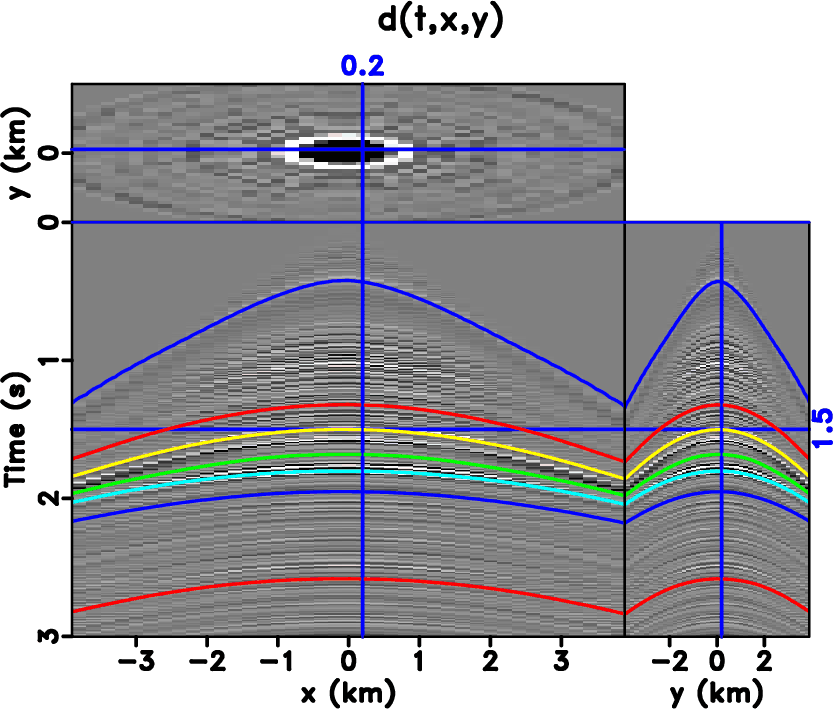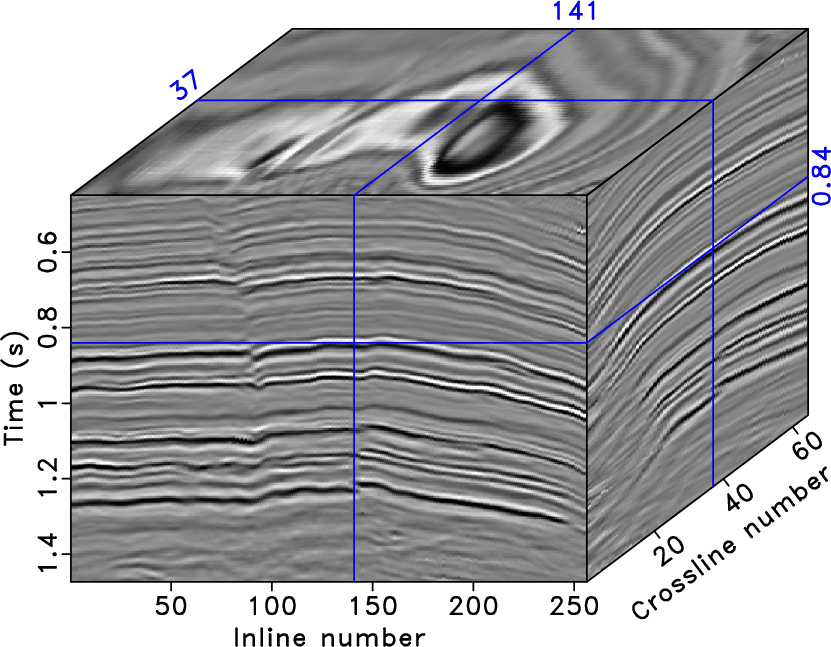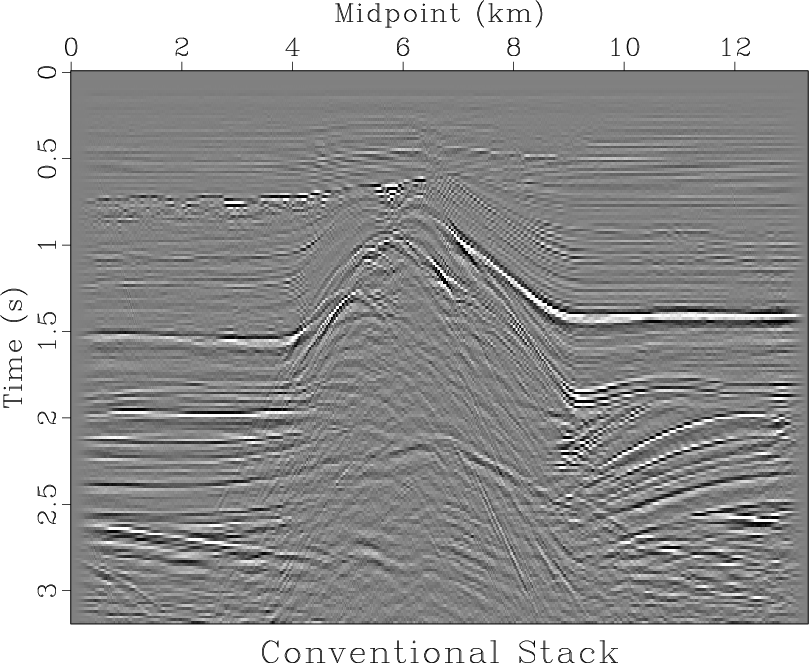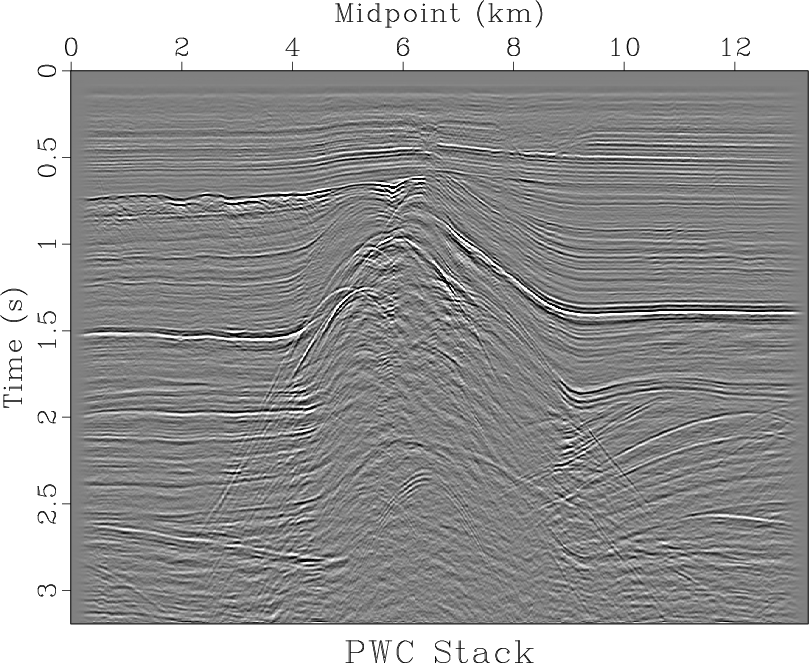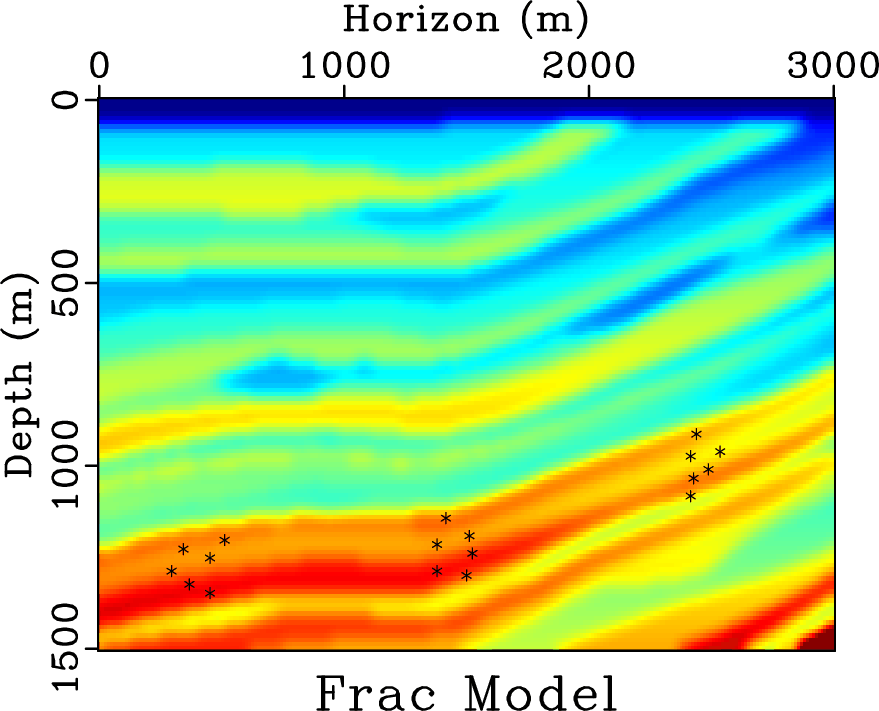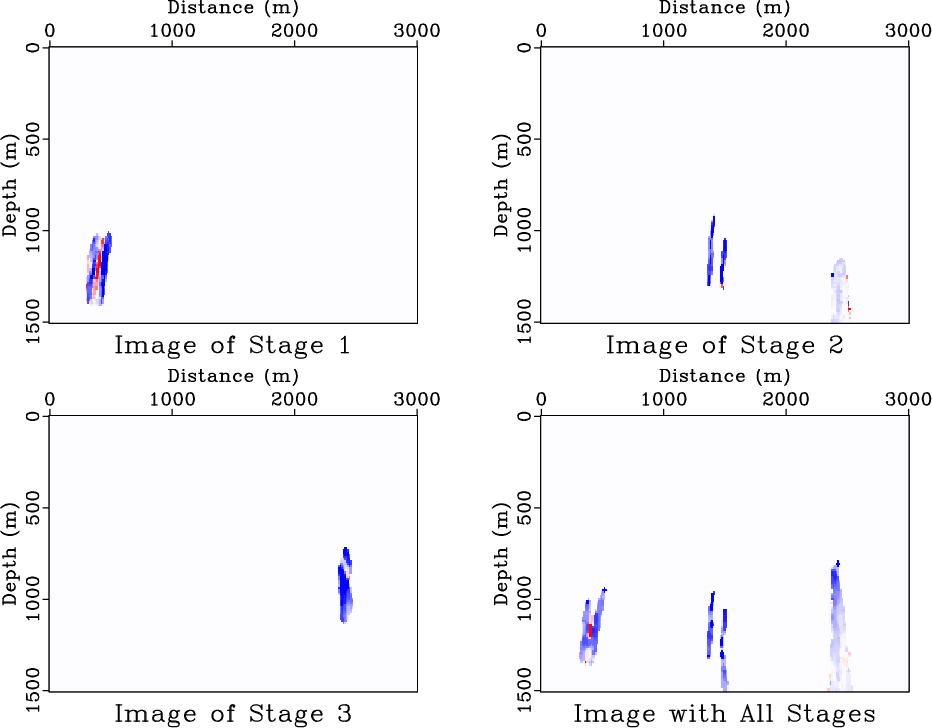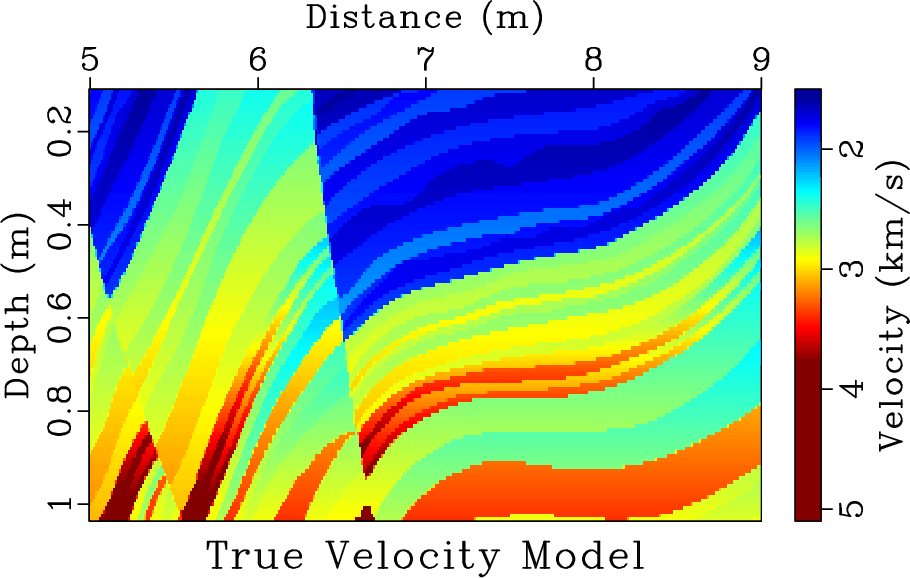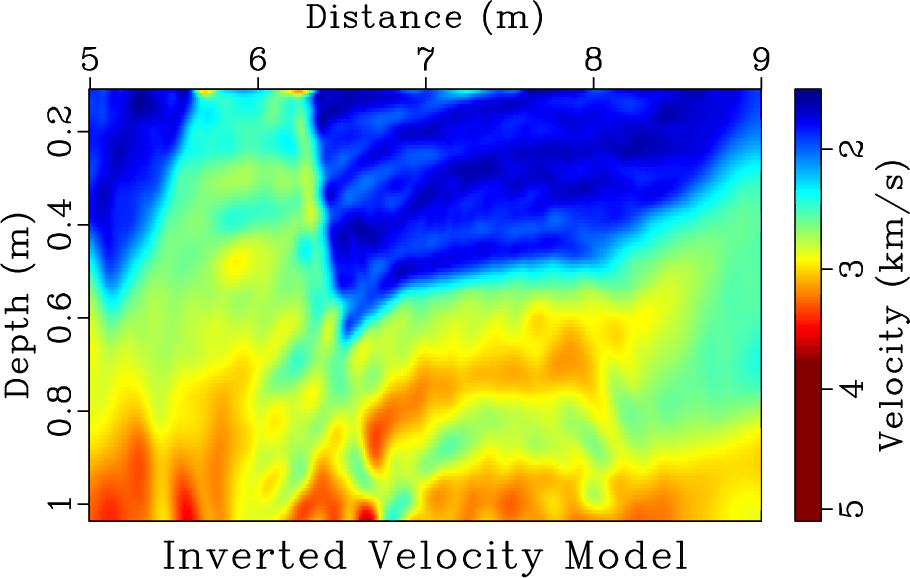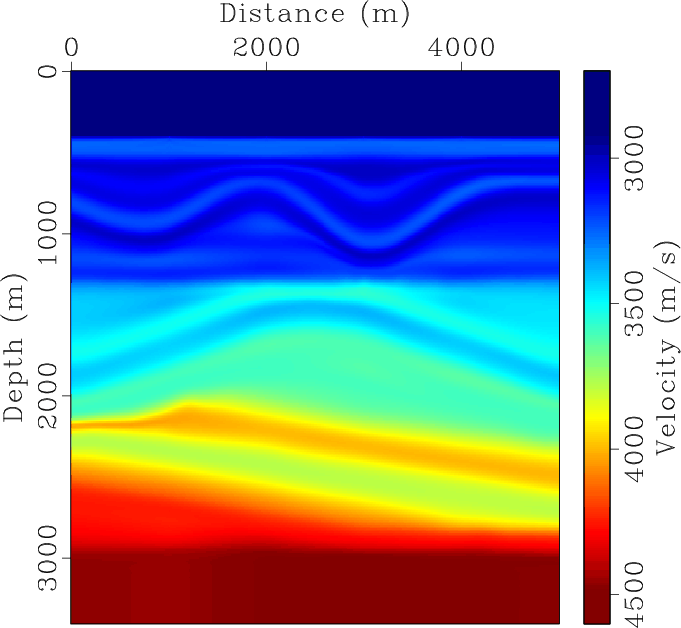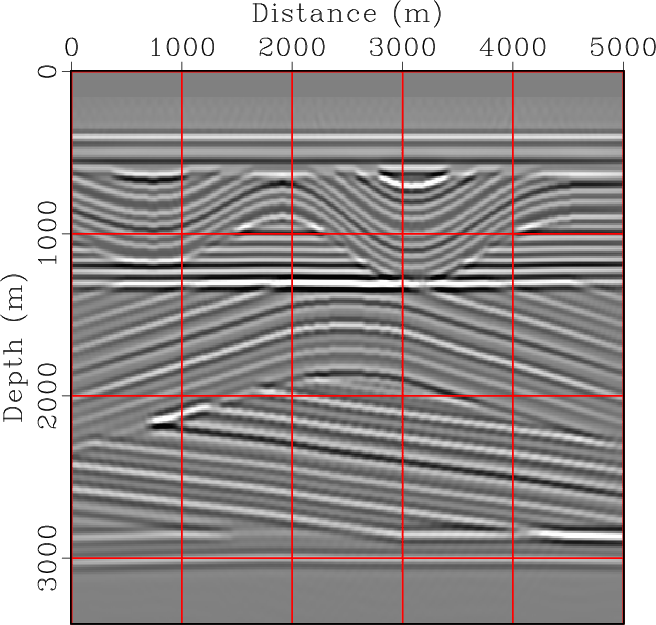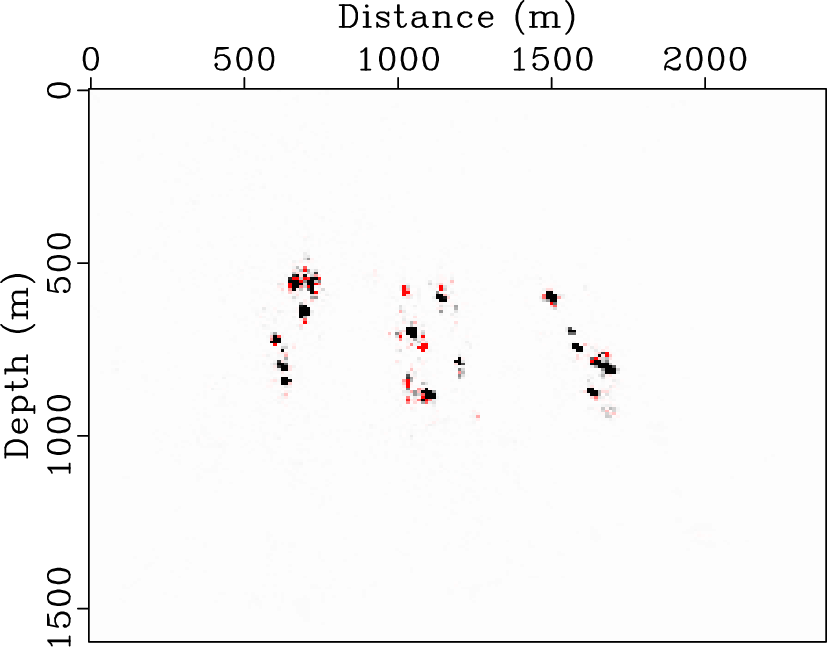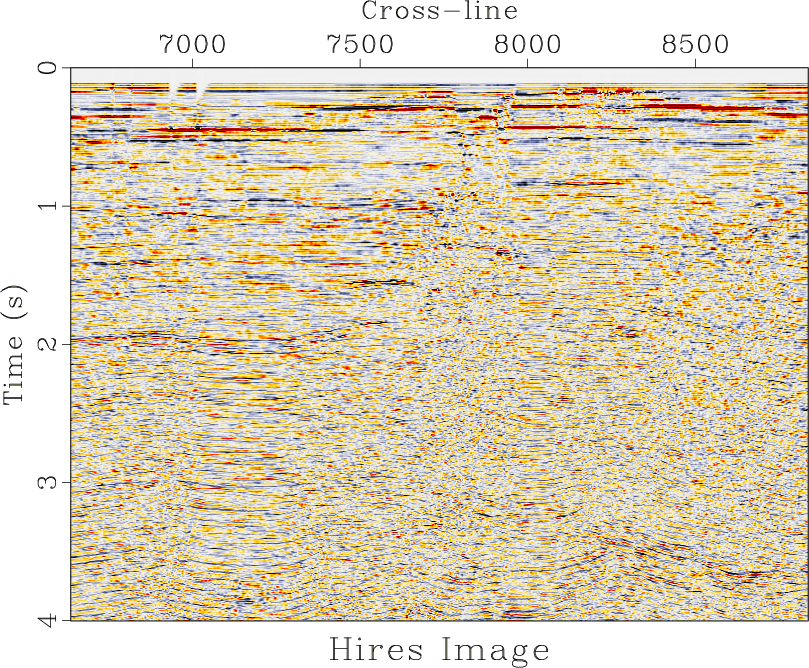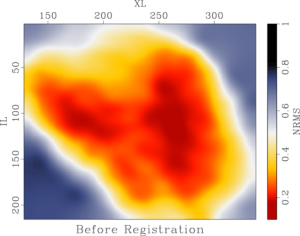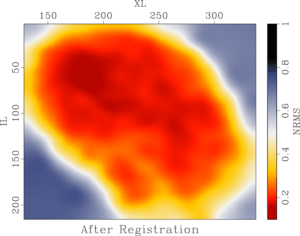An old paper is added to the collection of reproducible documents: Probabilistic moveout analysis by time warping
Parameter estimation from reflection moveout analysis represents one of the most fundamental problems in subsurface model building. We propose an efficient moveout inversion method that is based on the process of automatic flattening of common-midpoint (CMP) gathers using local slopes. We show that as a byproduct of this flattening process, we can also estimate reflection traveltimes corresponding to the flattened CMP gathers. This traveltime information allows us to construct a highly overdetermined system and subsequently invert for moveout parameters including normal-moveout (NMO) velocities and quartic coefficients related to anisotropy. We utilize the 3D generalized moveout approximation (GMA) that can accurately capture the effects of complex anisotropy on reflection traveltimes as the basis for our moveout inversion. Due to the cheap forward traveltime computations by GMA, we employ a Monte Carlo inversion scheme for an improved handling of the non-linearity between reflection traveltimes and moveout parameters. This choice also allows us to set up a probabilistic inversion workflow within a Bayesian framework, where we can obtain the posterior probability distributions that contain valuable statistical information on estimated parameters such as uncertainty and correlations. We use synthetic and real-data examples including the data from the SEAM Phase II unconventional reservoir model to demonstrate the performance of our proposed method and discuss insights into the problem of moveout inversion gained from analyzing the posterior probability distributions. Our results suggest that the solutions to the problem of traveltime-only moveout inversion from 2D CMP gathers are relatively well-constrained by the data. However, parameter estimation from 3D CMP gathers associated with more moveout parameters and complex anisotropic models are generally non-unique and that there are trade-offs among inverted parameters, especially the quartic coefficients.
